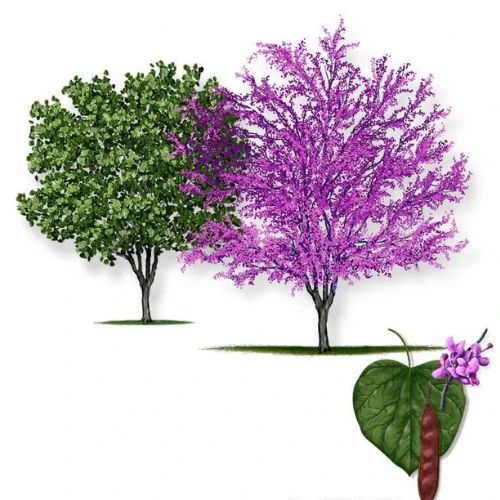Looking to add color, charm, and pollinator appeal to your landscape? The redbud tree is a standout choice for gardeners. With its heart-shaped leaves and vibrant spring blossoms, it offers four-season beauty with minimal upkeep.
Why Choose a Redbud Tree?
- Stunning spring blooms: Pink, purple, or white flowers burst directly from branches
- Wildlife friendly: Attracts bees and butterflies
- Compact size: Perfect for small gardens and urban spaces
- Low maintenance: Adaptable and drought-tolerant once established

Best Redbud Tree Varieties
| Variety | USDA Zone | Flower Color | Notes |
|---|---|---|---|
| Eastern Redbud (Cercis canadensis) | 4–9 | Pink-purple | Native, very hardy |
| Forest Pansy | 5–9 | Reddish-pink | Dark foliage, ornamental |
| Texas Redbud | 6–9 | Magenta | Heat-tolerant, compact |
| Alba | 5–9 | White | Unique and elegant appearance |
Where and How to Plant a Redbud Tree
- Sunlight: Full sun to partial shade (4–6 hours/day)
- Soil: Well-drained, slightly acidic to neutral (pH 6.0–7.5)
- Spacing: 15–20 feet away from structures or other trees
- Planting time: Early spring or fall for best root establishment
🛑 Avoid planting in areas with poor drainage, as redbuds dislike soggy roots.
Watering, Pruning & Care
- Watering: Weekly in the first year, then only during dry spells
- Mulching: 2–3 inches of mulch helps retain moisture and reduce weeds
- Pruning: Light pruning after flowering to shape and remove crossing branches
- Fertilizer: Not necessary if soil is healthy — compost in spring is enough
Seasonal Beauty and Pollinator Benefits
Redbud trees bloom before most trees leaf out, creating a striking display. After flowers fade, lush green (or purple) leaves fill the canopy.
They also:
- Support early pollinators
- Provide mild shade in summer
- Offer colorful fall foliage (yellow, orange tones)
Common Issues and How to Solve Them
| Problem | Cause | Solution |
|---|---|---|
| Wilting leaves | Root rot or poor drainage | Improve soil drainage, avoid overwatering |
| No flowers | Young tree or insufficient sunlight | Wait 2–3 years or relocate to sunnier spot |
| Canker or dieback | Fungal infections | Prune affected areas, apply fungicide if needed |

Redbud Tree in Landscape Design
Redbuds are versatile and work well:
- As specimen trees in front yards
- Along garden paths or near patios
- In woodland-style gardens or pollinator zones
💡 Pro tip: Pair redbuds with spring bulbs like daffodils or woodland perennials for layered interest.
Final Thoughts
The redbud tree brings four-season interest, attracts beneficial wildlife, and thrives with minimal maintenance. It’s a perfect choice for both novice and seasoned gardeners looking to enhance their outdoor spaces.
Want more low-maintenance tree ideas?
Check out our guide on Mulberry Trees: Fast-Growing Fruit Trees You’ll Love.
Building your landscape from scratch?
Explore our How to Build a Raised Garden Bed tutorial for a strong start.
📚 Learn More
Visit the University of Kentucky’s Redbud Tree Care Guide for expert advice.


